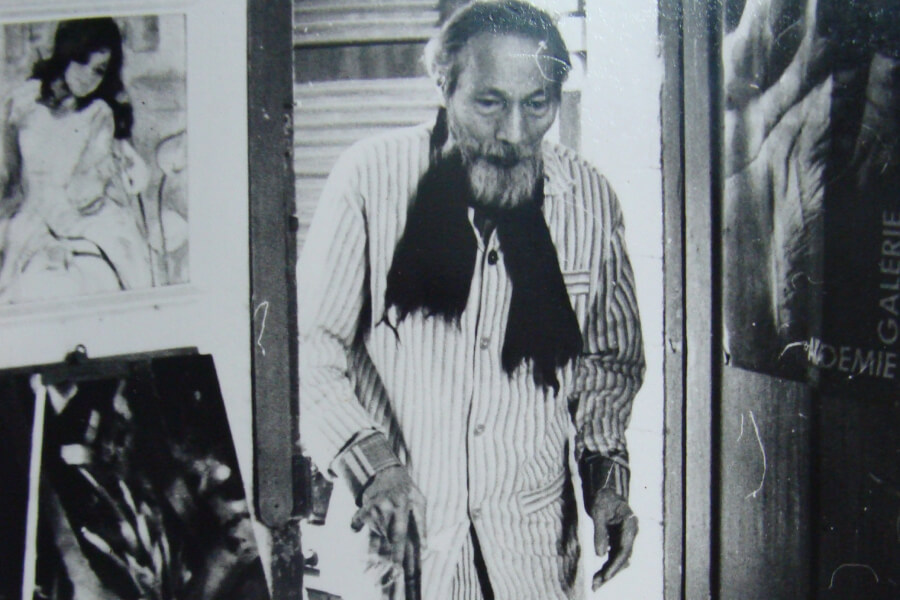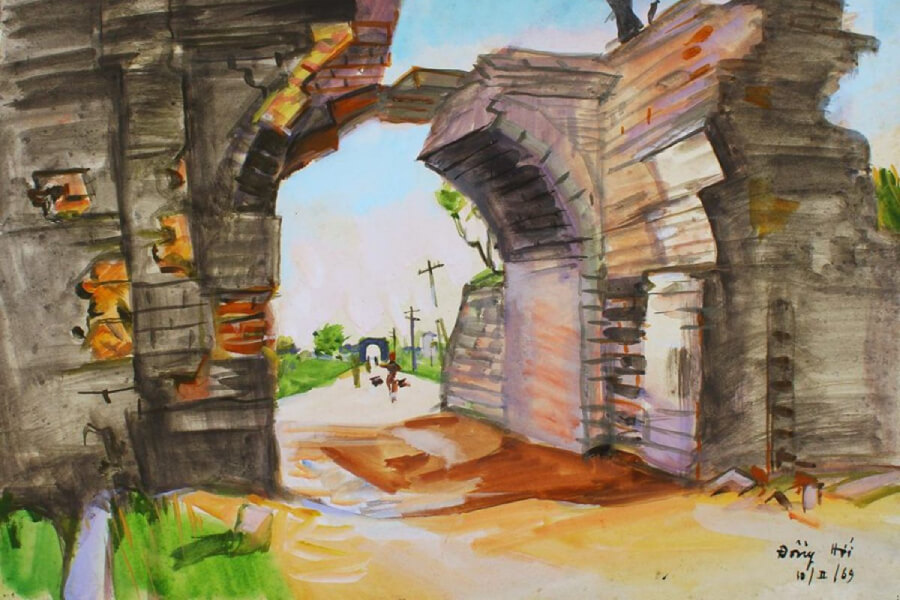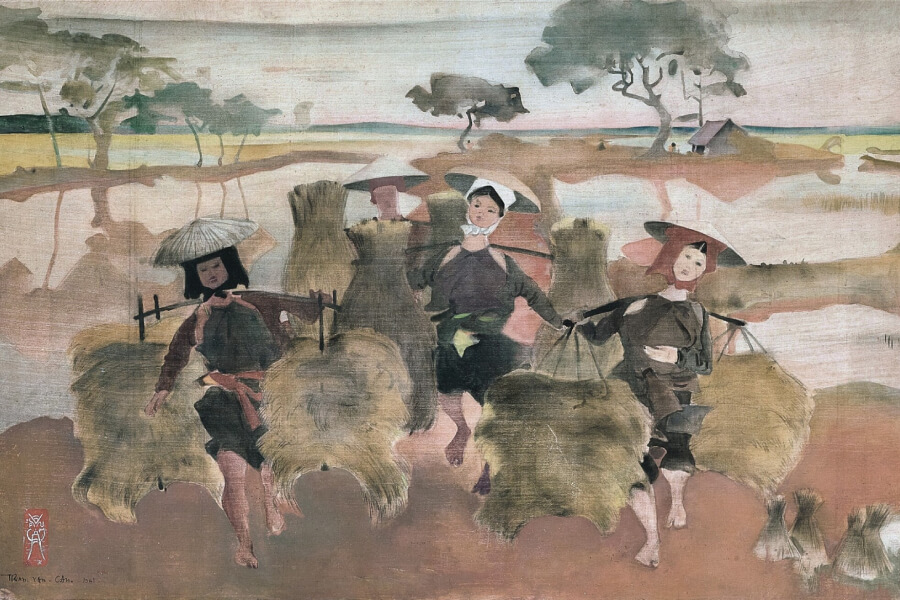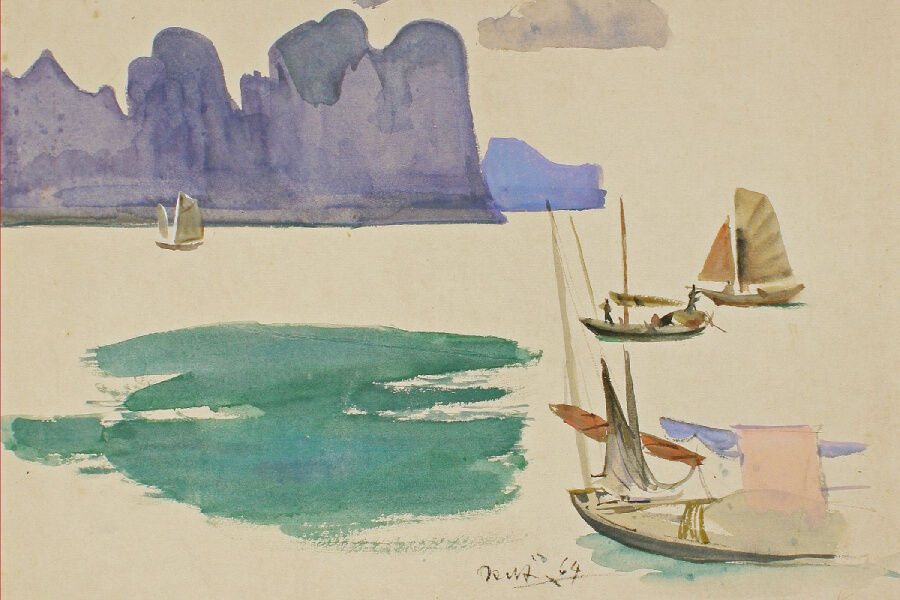Biography of Tran Van Can
Tran Van Can (1910-1994) was born in Hai Phong, Vietnam. He was born in an intellectual family; his father was a postal worker. In 1924, after finishing primary school in Kien An, his family took him to Hanoi to live with his grandmother.
In his childhood, influenced by his mother, who was a craftsman, and his uncle who specialized in drawing paper lamps, he soon showed an aptitude and interest in the art. This interest was approved by his father. Therefore, after less than 2 years of secondary school, in 1925, according to his father’s opinion, he entered École de l’art appliqué in Hanoi.
Tran Van Can’s Career
In 1931, Tran Van Can passed the exam and studied painting, graphics, and decoration at Indochina Fine Arts College, class VI (1931-1936). His classmates were Luu Van Sin, Nguyen Gia Tri, Nguyen Van Tao, Vu Duc Nhuan, and Nguyen Thuy Nhan. During this time, he studied while composing, initially releasing his first real works.
In 1933, together with Le Pho, Pham Hau, Nguyen Khang, and Tran Quang Tran, he studied the painting technique to find a way to paint many layers overlapping each other and grinding.
In 1934, his debut work, “My Mother” was exhibited in Paris.
In 1935, at the first exhibition of the Promotion of Engineering and Technology (SADEAL), he had four works “My sister” (oil painting), “Father and Son” (silk), “Đi làm đồng” and “Riverside scene” (color woodcarving) participated in the exhibition and was appointed to the Judges.
In 1936, he participated in the second SADEAL exhibition with three silk paintings: “Loneliness”, “Portrait of a little girl” and “Horse Herd”. Graduating with the highly appreciated work ” Lều chõng”, but when he graduated, he turned down the appointment of the colonial government to continue focusing on experimenting and designing with different materials. He became a teacher at the Ecole.
One of his students, painter Vu Giang Huong, former Secretary General of the Viet Nam Fine Arts Association said about him:
“Tran Van Can was a pure artist who devoted his life to creativity. His paintings reveal his profound love for people and the homeland. Many of them depict the Vietnamese people’s will during the wars of resistance against the French and the Americans. He would put himself in life-threatening situations to get inspiration for his paintings.”
In 1937, he attended the Paris international fair with four silk works: “Portrait of a Girl on a peach blossom background”, “Flower market”, ” The” and “Feed the horse”.
In 1938, he participated in the 3rd SADEAL exhibition in Hai Phong with the works “Going to the pagoda” (silk), “In the garden” (lacquer) and received the Premier Prize, the work was sent to the exhibition in Batavia.
In 1939, he participated in the fourth SADEAL exhibition with “Besides the Red River” (silk), and “Hue Landscape” (oil painting). In 1940, he sent the works “Gang of rice” (silk) and “Fisherman” (oil painting) to attend an exhibition in Tokyo.
In 1943, he joined the group “Foyer de l’Art Annamite” (FARTA) founded by artist Le Van De, and sent two works to the exhibition, “Em Thuy” (oil painting).) and ” Gội đầu” (woodcut), and was awarded the first prize. The following year, he sent two works “By the Lotus Pond” (oil painting), and ” Hai thiếu nữ trước bình phong” (silk) to participate in the 2nd FARTA exhibition.
In 1944, he submitted the work “Sunshine in the garden” (oil painting) to the exhibition “Single”.
In 1946, the first national art exhibition was held. Tran Van Can’s painting ” Xuống đồng” was awarded the first prize and was purchased by the National Salvation Cultural Association, along with “Portrait of President Ho Chi Minh” by Nguyen Do Cung.
1954 -1989: Tran Van Can worked as the headmaster for the Ecole from 1954 to 1964 and was the general secretary of the Vietnamese Fine Arts Association between 1958 and 1983. He was also the president of the Vietnamese Association of Graphic Arts between 1983 and 1989.
1994: He passed away in Hanoi at the age of 75.
Tran Van Can with his unique painting style
Tran Van Can’s painting style is boldly personal, modern and new, rich in association, and still imbued with folk flavour as well as national identity. His work is genuine, gentle, without exaggeration. They are the result of a journey that is both arduous and equally exciting.
This artist has been constantly researching and creating, absorbing Western art and combining skillfully with the national identity that has been studied extensively in folk paintings of Dong Ho, Hang Trong or sculptures.
Highlighted Artworks of Tran Van Can
Tran Van Can left a truly huge legacy for Vietnamese painting. His works are displayed at the Vietnam Fine Arts Museum as well as loved and collected by many foreign individuals and organizations.
The typical work of this artist accompanies each year of his life. Many works have been mentioned in the above contents such as:
- Farmers
- Lady Washing Hair
- Little Thuy (1943)
- The rice field (1958) …






